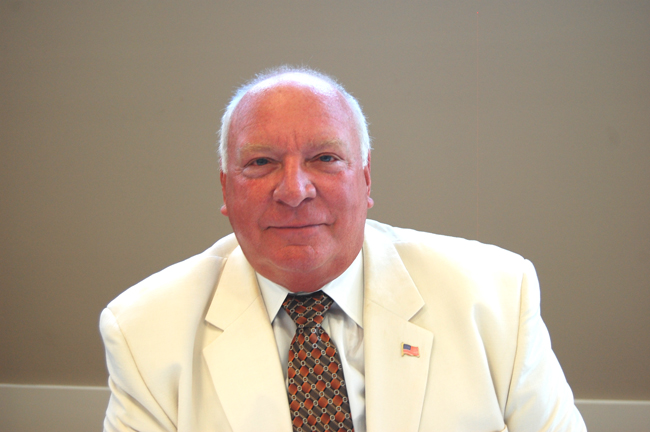
For background on the Live interview, go here. For the Charlie Ericksen interview, go here. And if you’d like to take the Palm Coast mayor poll, or see those results, go here.
The Questions in Summary: Quick Links
- Candidate Basics
- Growth and development
- What defines a great city?
- Decaying commercial zones
- Culture and the arts
- Consolidation
- Annexation
- Taxes
- Race relations
- The done-deal City Council
- What makes for a good city council member?
- Evaluation of City Manager Jim Landon
- Council members’ age
![]()
The Candidate: Jon Netts
Date of Birth: June 2, 1942.
Principal jobs: In New Jersey: Teacher, School Administrator, Teacher Trainer; Real Estate Broker, College Instructor in Real Estate Law and Investment. In Florida: Owner of a floor covering store, Tow boat operator for TowBoat U.S.
Party affiliation: This is a non-partisan election. I am a registered Republican.
1. Palm Coast has 18,000 undeveloped lots; the city has also approved four DRIs (Developments of Regional Impact) totaling 17,000 homes and 9 million square feet of commercial and industrial development. Set aside Flagler County’s and Bunnell’s own ambitions to grow, and assume, generously, that the housing market recovers reasonably well soon. First, was it smart to approve such an abundance of residential development in the rubble of the great housing crash. Second, given that abundance of approved developments, how is Palm Coast to avoid another damaging housing glut? Third, how are property values going to recover when, assuming the rules of supply and demand haven’t changed, that abundance of supply will naturally keep prices low?
First, many of the undeveloped lots probably will never be built upon considering that a number of these are so-called “drop lots” and a number are owned by adjacent property owners who use them as “side yards.” Further, there appears to be a shift in the type of housing that Floridians desire. The once traditional “3 bedroom; 2½ baths” on a quarter acre lot no longer fits with their lifestyle. Many folks today prefer smaller homes with zero lot lines, condominiums, etc. This is what is contemplated in the as-yet build DRI’s.
Second, these DRI’s were NOT approved “in the rubble of the great housing crash;” they were initiated during the exponential growth period of Florida, Flagler County, and Palm Coast.
(The final approvals of three DRIs, Bulow, Neoga and Old Brick all took place in the past 12 months.)
Also, keep in mind the concept of “private property rights.” The owners/developers were intent on maximizing their economic potential by developing their land. They could have developed them in the more typical “urban sprawl” fashion that was typical of growth in Florida in the past. They could have developed their land while part of unincorporated Flagler County. But they chose Palm Coast.
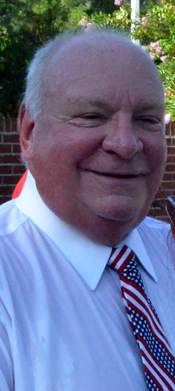
The resulting DRI process allowed numerous State agencies and not-for profits (the Florida Department of Transportation, the Department of Environmental Protection, Fish and Wildlife, the Water Management District, the Regional Planning Council, and the Audubon Society) to weigh in on the planning process. Rather than development of the traditional quarter acre home sites, these properties will “cluster” development – preserving large areas of natural wildlife habitat and wetlands.
These DRI’s embraced the “mixed use” concept that seeks to create employment opportunities within the residential areas. Florida (and much of the United States) has created a transportation nightmare by permitting and in some cases encouraging housing opportunities in one area and employment centers in another. This leaves government with the crippling responsibility of “linking” these two nodes with expensive transportation modalities – be they roadways, rail, BRT, etc. (I suggest you follow the deliberations of the Northeast Florida Regional Transportation Study Commission on this very problem.)
Like most DRI’s, the Palm Coast DRI’s are “phased.” Only “so much” can be built at one time. It would be foolish for any developer to build faster than they can sell. One can only hope that the lessons of the recent past will be remembered as these properties are developed. Also, remember that unlike many earlier DRI’s, in Palm Coast there is a “linkage” between development of the housing component and the non-residential retail, commercial and light industrial component. This should help prevent an imbalance between housing and non-residential development.
That’s great in theory, but it addresses neither the contradicting recent history, when wisdom in development was an oxymoron, nor the question of low prices kept low by an abundance of supply. Put another way: what have you as a policy maker done to ensure that Palm Coast’s housing market, as steered by recent delopment approvals, recover?
Palm Coast can offer guidance to the developers of the DRI’s; we can provide demographics, statistics, and the like, but the ultimate decision as to when and at what rate to develop the properties is that of the property owner. This is, after all, private property. Local government cannot and should not attempt to write the business plan for a private sector property owner. Were we to do so, could we be responsible for a failure of that plan?
Ericksen responds: Perhaps it would be wise to measure both components of growth, and slow down residential, if the non-residential growth/linkeage was not occurring as planned. What if no non-residential growth occurred, do we keep going forward?
2. What defines a great city—beyond its employees, its manager, its council, its great people and its beautiful medians—and what will you do (or, in the mayor’s case, what have you done) to make it so? Please give at least three specific examples within the scope of what’s doable by you as a member of the council. Also, give at least two examples of where Palm Coast is failing as a city, outside of infrastructural or economic issues.
Beyond the ones you mention? You’ve included in your list of exceptions some of the very items that do define a great city.
First and foremost – it’s the people! Unless you’ve lived elsewhere, it is difficult to appreciate the real value of Palm Coast’s diversity. This is one of our greatest assets. In a shrinking world it is more important than ever that we understand and appreciate the culture of others. Not only does Palm Coast have a large number of cultural groups, clubs, and associations dedicated to perpetuating their individual cultures and heritage, but these groups actively work to share their culture with others. A great city such as ours endorses and supports such associations. It encourages their activities and actively promotes them.
As a Council Member and as Mayor I have consistently supported sustainability and start-up “cultural grants” to support activities such as these.
A great city works toward economic sustainability. As we transition from a de facto retirement community to one that has a more broad representation of the all ages and socio-economic groups we need to find ways to make Palm Coast “hospitable” to all. A more broad tax base reduces the reliance on residential property taxes alone to provide a wide range of municipal services.
As a Council Member and as Mayor I worked to broaden our tax base by demanding “mixed use” DRI’s, by eliminating transitional impact fees for our older commercial buildings, by creating a Business Assistance Center to encourage and support local businesses, and by supporting the creation of a unique “fiber net” system that not only serves the City, our schools, and Florida Hospital Flagler, but also is an economic engine for new high tech businesses
A great city provides a safe environment for all its residents; those within a gated community, those in traditional single family residences, those in condominiums, those in apartments, and yes, those who are currently homeless.
Please specify here what Palm Coast has done, and what you’ve done as mayor, to provide a safe environment for the homeless in Palm Coast.
We contract with the Flagler County Sheriff for additional law enforcement personnel to keep our streets and neighborhoods safe. We support a Fire Department that provides a host of proactive fire prevention and home safety programs in addition to the usual fire department services.
A great city maintains an effective and efficient infrastructure – roads, stormwater conveyances, water and sewer, etc. We have only to look around us to see the foolish and costly consequences of failure to maintain what we already have. As Councilman Jim Holland once said: “These may not be the best roads in the world (speaking of the unique “soil cement” road base used in Palm Coast’s early construction) but they are what we have.”
A great city has a vision. Clichés notwithstanding, “If you don’t know where you’re going, any road will get you there.” Palm Coast has such a vision – clearly articulated. We understand who and what we are; what we wish to retain, protect and preserve, and how we wish to evolve. With only a very few exceptions, our residents place great value on the natural environment that is characteristic of Palm Coast. They praise the oak hammock that shades Palm Coast Parkway; they are outspoken in praise of the ever-increasing number bike paths, hiking trails, and multi-purpose paths the City has provided. They enjoy boating, tennis, golf and a wide variety of youth and adult sports. They visit and enjoy new venues like Waterfront Park. They resist the proliferation of commercialism on our streets. They like the fact that our main streets remain free from “pylon” signs, flashing billboards, and throw-away roadside signs. They appreciate the “helping hand” that we gave the largely African-American Masonic Cemetery.
The latter part of the question is missing an answer: two examples of where the city is failing, outside of infrastructure or economic issues.
There are no areas in which Palm Coast is “failing,” but there are certainly areas in which we could do more if the resources were available. We could accelerate the rehabilitation of our aging stormwater system. We, along with Flagler County, could develop some sort of inter and intra-city transportation to supplement the “on-call” system currently in place. There is no doubt that many would add the issue of “economic development” and “job creation” to this list.
Ericksen responds: Is the “fiber net”system breaking even as of now? If not do we have a plan in place to bring it to this level? Just how long will it take, for the new revenue received from Florida Hospital Flagler and the School Board, to recover the new equipment installed? I believ this are is an enterprise fund, and will look to be at least break even in 3 years. We could start by acknowledging (referendum) that we do have a homeless problem in the City, followed by additional “helping hands” like Masonic Cemetery.
These are all great, but they do all have ongoing maintenance costs associated with them. Waterfront Park is on land owned by F.I.N.D, that can be recalled, due to Intrawaterway dredging, and is one of the major sites identified as a possible Desalination Plant location.
3. City Market Place, Roma Court, St. Johns Plaza, Palm Harbor Shopping center, Town Center: Every one of those commercial areas, old or new, is suffering from gaping vacancies or inactivity, or, in two of those cases, decay as well. If you’re the incumbent, this happened on your watch. What has the council done, and what can the council do, concretely rather than rhetorically, to improve matters, keeping in mind those 9 million additional square feet of commercial space in the city’s future?
I hope you’re not suggesting that the present state of the economy is somehow the fault of the Palm Coast Mayor and Council, but in answer to your question, take a look at “Prosperity 2021.” One of our major goals is the preservation and rehabilitation of our existing commercial centers.
- We have eliminated impact fees for our older commercial buildings.
- We have created a Business Assistance Center to assist existing businesses, and to encourage and support new, start-up businesses.
- We support the concept of “neighborhood shopping” that reduces the dependence on the automobile.
- We promote Palm Coast as “a great place to live, work, shop and play.” It is no coincidence that since 2009 sales tax revenues in Palm Coast have increased +9.79% while in that same time frame they have decreased -4.27% in Flagler County; decreased -6.86% in St. Johns County and decreased -10.63% in Volusia County.
- We provide a venue for events that draw visitors to Palm Coast where they spend money at our local businesses.
The question was about the moribund shopping centers in the city. What has any of the bullet points above done to reverse those centers’ anemic or, in some cases—namely, European Village, worsening–status? [No follow-up answer provided.]
Ericksen Responds: I’m assuming that a large amount or all of the 2009 sales tax revenues are the result of the new Target Center and other stores on Route 100. This was a real plus for Palm Coast, and we need to pursue incentives for more retail to build in the area.
4. What have you done for culture lately? How have you supported the arts locally (beyond, say, signing your name to a proclamation or attending a show)? What have you done to support the arts as a member of the council, or what would you do as a member on the council? Palm Coast’s budget for the arts has been declining: $33,000 in 2009, $24,000 in 2010, and $20,000 budgeted for this year and next year. Why the decline, and should a city of this size be so stingy when it comes to the arts?

Ah, the same old story: “lower my taxes, but provide me with more services!” It is true; the City’s expenditure for cultural arts grants has decreased, as has spending overall. It is only reasonable that all areas of the budget share in the reductions.
The good news is that while residents cannot repave their own streets or repair their own stormwater structures, they can and do support the arts. Public support for the arts has increased in recent years and I hope it continues to do so.
The response is incomplete: what have you done for the arts? There’s no issue of demand for increased services here, but merely of maintaining a certain level of support, as opposed to cutting it 40 percent from an already low amount: the question remains: should a city this size be so stingy when it comes to the arts?
Ericksen responds: I would make it a point to get out and be visible at Arts locations. Maybe someone could even come up with a “Palm Coast” series of hand painted pictures. Let’s also spend some time at youth Arts events.
5. Palm Coast is already a consolidated city: it contracts with the sheriff for law enforcement services, in effect ensuring that it maintains the higher level of law enforcement services that it wants through that contract while avoiding the cost of a police department of its own. Would you support a similar model with fire and EMS services, if it was shown to save the city money?
No, Palm Coast is not a consolidated city. Palm Coast contracts with a private contractor for solid waste removal; Flagler Beach and Bunnell provide that service internally. Flagler Beach and Bunnell have their own Police Departments; Palm Coast has chosen to contract with the Sheriff’s Department for enhanced police services. Enhanced is the operative word – there is a base level of service that the Sheriff provides to all Flagler County. As an urbanized area, Palm Coast needs an additional level of service – for which we pay. This is the age-old question of “privatization” and “out-sourcing.” There is no universal answer – each option must be reviewed on its merits.
With regard to consolidation of fire services – no one has yet shown me any cost savings while maintaining the same level of service. The safe minimum number of firefighters per truck is three; multiply this by the number of trucks and the number of shifts and that by the salary costs and you get a baseline personnel cost. The number of trucks is a level of service issue. A firehouse on every corner would provide exceptional service – at an exorbitant cost. Fewer trucks, more widely spaced than at present, would result in a cost savings – at the consequence of a lower level of service. As with police protection, the need for fire protection is greater in an urbanized area is greater than in more rural areas.
Suppose one chose to consolidate fire service with the County while maintaining the same level of service. The existing personnel would move from the City to the County payroll. In all likelihood you could reduce the number of personnel somewhat – you would not need two Chiefs; two Deputy Chiefs, etc. You probably could reduce the number of “reserve personnel” needed to cover for vacations, illness, time off, training, etc. On the other hand, the per-person salary costs at the County are higher than in Palm Coast. Further, the County’s pension plan is provided by the Florida Retirement System (FRS) which is a “defined benefit system” that has a higher cost than Palm Coast’s “defined contribution plan.” Net result of consolidation – probably no savings.
Then there is the issue of equity. Could Flagler County justify a higher level of service to Palm Coast than to, say, Daytona North? Or would there be a surcharge for a higher level of service similar to that charged by the Sheriff? Savings? Or increased costs?
I’m more than willing to explore consolidation or any other proposal that might result in savings to the Palm Coast taxpayers, but beware.. EMS service is another issue altogether. I think that consolidation or some form of reorganization might result in significant cost savings.
Let’s look at the current model. In almost every case, when there is an EMS call in the County the dispatcher sends a County ambulance and a County fire truck to the scene. The ambulance provides the necessary Advanced Life Support (ALS), while the firefighters provide additional manpower or, in the case of a delay in the arrival of the ambulance, they initiate ALS. In Palm Coast, the fire truck dispatched is a Palm City fire truck, not one of the County’s.
Why not dispatch a County fire truck to all calls within the County? Why not put an additional Paramedic on each ambulance – thus reducing the need for dispatching a fire truck with its three additional Paramedics to most calls for service? These, and other, are issues we need to investigate.
Palm Coast and Flagler County have begun to address this issue. The agreement to use a common Medical Director is the first step in addressing the ALS issue. I look forward to further discussion and further reorganization that will reduce costs to all Flagler County residents.
6. When and where will, or should, Palm Coast annexations stop? Would you support a Duval-like government for the entirety of Flagler County?
All annexations to Palm Coast have been voluntary. In many cases, they restored to Palm Coast the outlying areas that were platted by ITT and were always intended to be part of the City. They were “removed” from Palm Coast by the State’s “population density” requirement for incorporation of a City. In many cases the rationale for incorporation is to ensure that those who benefit from the proximity to a city help pay for the City benefits they enjoy.
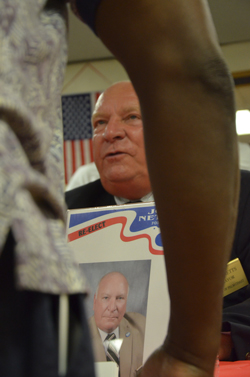 It is well established in Florida law that property owners who wish to avail themselves of City services, e.g. water and sewer, can be required by law to annex – hence the City’s requirement for “pre-annexation” agreements from those seeking such City services.
It is well established in Florida law that property owners who wish to avail themselves of City services, e.g. water and sewer, can be required by law to annex – hence the City’s requirement for “pre-annexation” agreements from those seeking such City services.
I believe that we have annexed those areas that I mentioned at the outset – we do not need to, nor should we attempt to expand our boundaries. Any further annexations should be limited to “filling in the holes.”
I absolutely do not support a Duval-like government for Flagler County. As a County, we are too diverse; our strength is in our individualism. The vision for Flagler Beach is different from that of Bunnell or Palm Coast or Marineland or Beverly Beach. Most of unincorporated Flagler County is rural and agricultural. Its needs, wants, and desires are very different from the cities in Flagler County. Where there are avenues of cooperation, local governments need to pursue them, but we do not need one “master government.”
7. The argument has long been that the city’s lopsided dependence on residential property taxes is unsustainable. Yet council members happily tout Palm Coast’s tax rate as the second-lowest in Florida, for cities Palm Coast’s size, while the administration recently put out a long list of accomplishments and council members repeatedly speak about the bang for taxpayers’ buck. Explain the contradiction.
There is no contradiction – we simply make the best use of the taxes we collect. Having a low tax rate while providing a wide variety of services is testimony to careful planning, wise spending, and a vision that is consistent with the majority of our residents. A diversification of the tax base will allow us to reduce residential taxes while continuing to keep Palm Coast a vibrant and sustainable community. Again: what’s broken about having the second-lowest property tax rate for a city this size? Is the tax rate too high?
Ericksen responds: In some cases, we put aside funds every year, to accrue for large purchases like fire trucks and fleet vehicles. Shouldn’t we have included a little bit more Storm Water management funding very year to keep pace with the known deterioration of the existing system?
8. Please give us your assessment of race relations in Palm Coast, where improvements are needed, and what you’ll do to push those improvements along.
I worked for many years in a multi-racial, multi-ethnic, and multi-cultural community in New Jersey. I watched as that community struggled to overcome the consequences of both covert and overt discrimination as well as other effects of racial and religious disharmony. That local government and the local school board spent literally hundreds of thousands of dollars seeking solutions to the problems they faced. Elected officials, educators, community leaders and residents were offered “sensitivity training” programs, cultural awareness programs, etc. Diversity, for them, was a problem
Compare that experience with Palm Coast. Diversity is our strength. We do not have racial or religious enclaves. We live side-by-side with people of other races, religions, and cultures. We have a large number of “cultural societies” that work to protect and promote their individual cultures while at the same time, promoting “cross-cultural” events that allow sharing of their heritage with other groups. We have a high level of acceptance for differences. Instances of intolerance are rare and are actively denounced when they do occur.
As Mayor I have promoted cultural diversity at every turn. I have been pleased to represent the City and the City Council at almost every event sponsored by the African-American Society, the Portuguese Club, the African-Caribbean Cultural Association, the United Caribbean Cultural Association, the Irish Social Club, the Philippine Cultural Society, to name only a few.
Ericksen responds: About the only area I have heard any concern raised is not a cultural concern, but event location and cost concerns. Many of these organizations are using their special events as their major fund-raiser for the year, and the permitting cost seems too high. All festivals must be located in Town Center. They are even told that certain services that were free in the past cannot be provided on City property by others, and must be rendered by City personnel at a cost. This one cost could reduce the organization’s profit as a fundraiser to breakeven at best.
9. The Palm Coast City Council often appears to be in lockstep: unlike other local governments, dissent is rare, discussions and decisions, even in workshops, often appear pre-determined, and closed-door, one-on-one meetings with the city manager appear to play a large, and largely invisible, role in decisions. Please give us your assessment of council dynamics and transparency.
I never cease to be amazed at those who seem to value disharmony. Let’s look at the City Charter. Council sets goals, approves a budget, sets a millage rate, and hires a City Manager to achieve those goals within the confines of an adopted budget. All goal-setting is done in the sunshine.
Does the City Manager confer with the Mayor and Council? Absolutely; we are his employer. Why would he propose something if it is inconsistent with the goals set by Council?
When I became Mayor I asked that we increase the time spent in “workshopping” items that would come before Council. These workshops are open to the public and are publically broadcast. In a workshop setting we can ask questions, challenge assumptions, brainstorm. We can share opinions; we can discuss and suggest changes. We can listen to each other’s ideas and perhaps modify our own opinions. In most cases the final product, brought to a vote at a Council meeting, has been a product of evolution.
The question goes to council dynamics, even in workshops: the manager controls discussions, agendas and information, not the council, which usually is as informed as its packets allows it to be. Do you disagree? Do you find the council probing, questioning and analytical enough? [No follow-up answer provided.]
Ericksen responds: Just how do you measure public perception of how well they are doing their job? In many cases, attendees have talked with Council prior to the workshop, and their question/suggest are never raised.
10. What makes for an effective council member, what makes for a lousy council member? Give examples of both and rate or evaluate yourself.
An effective Council member has integrity, is engaged, involved, knowledgeable, committed, impartial, and experienced.
There is far too much well-deserved criticism of government officials at every level. How can we expect our citizens to support government when at every turn they see venal, self-serving behaviors? Without integrity no elected official can expect the support of his or her constituents.
A Council member must be engaged with the community. How better to understand the “will of the people” than by being a part of the whole community, not just that part that mirrors your own life experience.
A Council member that is involved in community activities brings local government closer to the people that it serves. But involvement cannot stop at the local level. So much of what happens in government today happens at a regional level. An effective Council member is willing to work with governments, agencies, commissions, etc. that are outside the local jurisdiction.
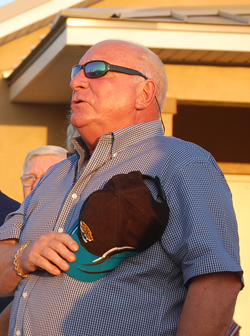
A Council member must be knowledgeable; knowledge obtained not so much from formal education – although that certainly helps, but knowledgeable about the nature of government, about the interrelationships between governments, about the regulations and constraints under which local government must operate. He or she must understand the historical precedents that underlie the current policies and procedures of the local government. “Those that do not understand history are doomed to repeat it.”
A Council member must be committed to public service. Any other reason for seeking office is unacceptable. While City Council may be a part-time position, it demands full time attention.
Along with the above, an effective Council member must be impartial. Where there are personal conflicts a Council member must recuse himself or herself. An effective Council member must not be beholden to any special interest group; he or she must not favor any segment of his constituency over any other. It is well established that “what you do for one, you do for all” and “what you do to one, you do to all.”
Experience is essential! The “Law of Unintended Consequences” has been the downfall for many who lack the vision that comes with experience. There are always long range consequences of short term decisions. All too many elected officials see only as far as the next election.”
To the extent that a Council member lacks any of these attributes, he or she moves closer to “lousy.” Naturally, I feel that I possess these characteristics and I feel that my history in elected office substantites this. One advantage of my being an incumbent is that the public can judge for themselves the extent to which I possess these attributes on the basis of my performance, not by campaign promises!
Ericksen responds: Does this mean that an otherwise talented person, like a present candidate [Jason DeLorenzo, the legislative affairs director of the local home builders’ association], should recuse himself from discussing any matters pertaining to home building? It would seem that this makes him a constant target for negative comments.
11. Evaluate City Manager Jim Landon’s performance in your view, citing strengths and weaknesses. If the city weren’t under budget constraints, would you give him a raise?
When Palm Coast’s first City Manger retired we did a nationwide search for his replacement. From a list of about fifty applicants, the list was narrowed to five or six. Each of these candidates was vetted by our consultant, interviewed individually and collectively by Council and invited to meet with members of the public in an informal, social setting. Mr. Landon was chosen as “the best of the bunch.”
He has worked hard to fulfill the wishes of the City Council. As we reduced administrative positions he has assumed more and more of the workload that was previously shouldered by an Assistant City Manager and a number of support staff.
Among his strengths is his ability to listen and, when necessary, change direction as directed by Council. He is not a “nine-to-five” administrator – he devotes countless hours to Palm Coast. He is a man of great integrity; placing the welfare of our community above any personal interests.
He brings a wealth of experience to the job. His service, first as a planner and then as a city manager in a number of communities, gives him a perspective that is invaluable in assisting Council reach good decisions.
Weaknesses? He is human. He sometimes takes issues personally when they are really not directed at him. “The broader ones shoulders, the more you must bear.”
Before we consider a raise for our City Manager, or for any “management level” individuals, we first need to provide adjustments to those lower on the pay scale who have had their salaries frozen.
12. With Frank Meeker’s exception, the council is made up of individuals well into retirement, working either part-time or not at all (council duties aside), and living off of pensions, Social Security, and government-subsidized health care. Both mayoral challengers are in that same category. How does that make you representative of a majority of residents who don;t fit in that category (though a large portion do), and how can you relate to the unique issues and stresses facing working-age residents facing unemployment, foreclosure, lack of health insurance and other similar everyday strains?
How about some clichés. “Been there, done that!” “Experience is the best teacher.” Since I was a child I have worked. I worked while in High School. I worked my way through College. Upon graduation and getting married, I worked two jobs for most of my life. After retiring from public education I ran my own business here in Florida. I continue to work, albeit part time.
I can relate to the issues facing our residents because I speak with them every day. These are my friends. I do not live an isolated existence; residents talk to me in WalMart and Publix. I worked with them as part of Habitat for Humanity. Whether they call, write, or e-mail, I pay attention and I respond.
The answer is much too general, given the uniqueness of the issues and circumstances we face.
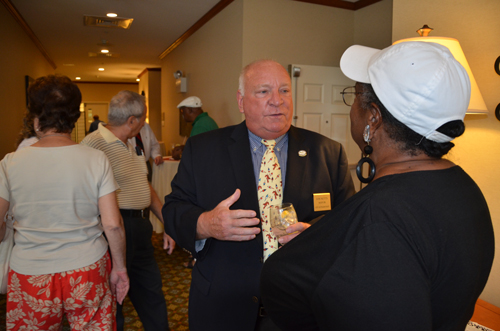
For more on the municipal elections, see also:
- As Voting for Palm Coast Mayor Begins, Netts and Ericksen Duel More Sharply
- Overflow Crowd at a Wonkish Forum for 7 Palm Coast City Council Candidates
- Uncertainty Over: Palm Coast Mayor Jon Netts Makes His Re-Election Bid Official
- Challenging Jon Netts, Charlie Ericksen Runs for Palm Coast Mayor on a Pro-Business Agenda
- Palm Coast Mayor: Tea Party Straw Poll Has Ericksen Far Ahead of Netts, 59-36%
- Incumbents Jon Netts and Holsey Moorman Leading Money Race In Palm Coast Elections
- Paying Tribute to Tea Party Faithfuls, City Council Candidates Hear Tax-Me-Not Earfuls
- Citing Cost and Turnout, Palm Coast Approves Voting and Election-Cycle Changes
- Palm Coast Races: 3 for Mayor, 4 for Council, 2 Elections, No Partridge, No Pear Tree
- Campaign Notes: Defacing Moorman, Excluding Ericksen, Unseating Kim Weeks




























Leave a Reply